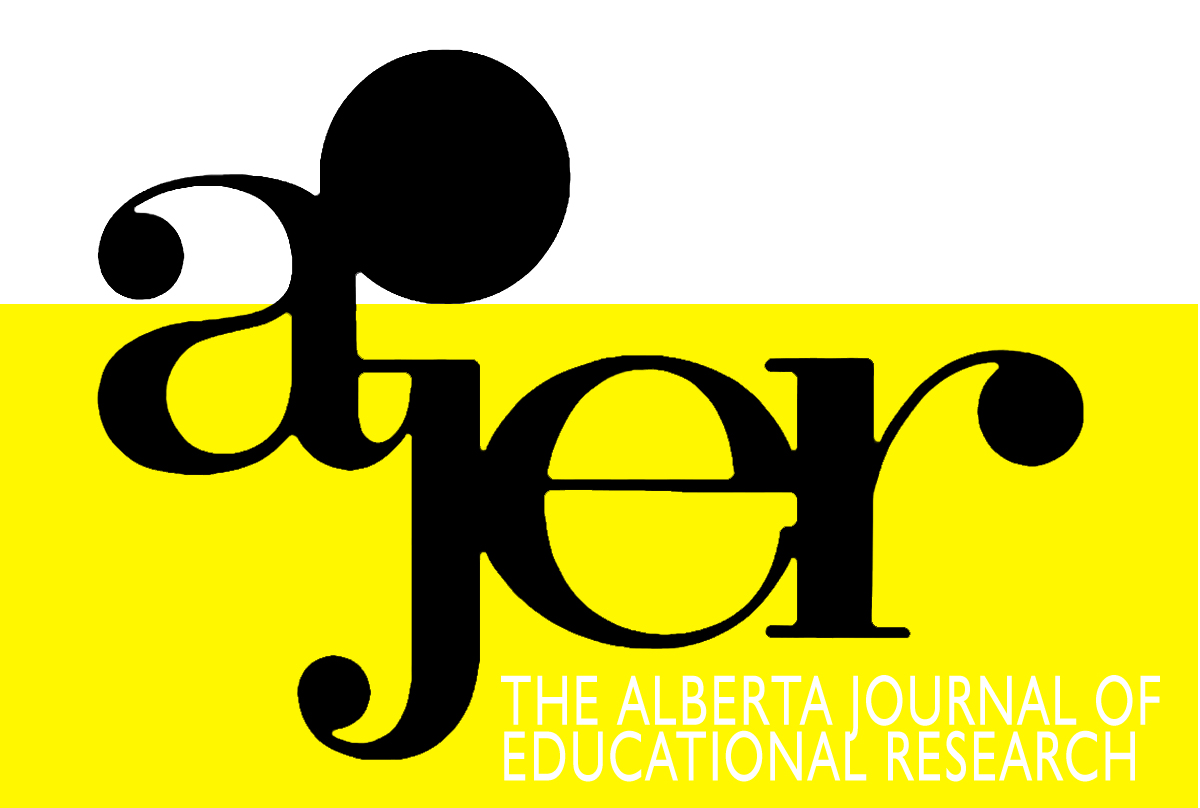Pre-service and Practicing Teachers’ Commitment to and Comfort with Social Emotional Learning
DOI:
https://doi.org/10.55016/ojs/ajer.v63i3.56284Keywords:
Key Words, social-emotional competence, social-emotional learning, Prosocial Classroom Model, sense of efficacy for classroom management, social engagement with students, Mots clés, compétence socio-affective, apprentissage socio-affectif, modèle e clasAbstract
Although teachers’ beliefs about social-emotional learning have become a topic of interest, understanding how they relate to teachers’ own social-emotional competence is unknown. We used a predictive correlation design to examine how Canadian pre-service (n=138) and in-service (n=276) teachers’ beliefs about social-emotional competence relate to their comfort with and commitment to social-emotional learning, and how both sets of beliefs are related to their perceived efficacy for classroom management and engagement with students. Regression analyses revealed that comfort with social-emotional learning significantly predicted both outcomes for both groups whereas commitment to social-emotional learning did not. Perceived social-emotional competence also played an important role. Pre-service teachers felt more committed to social-emotional learning, whereas in-service teachers felt more comfortable and believed they had higher levels of social-emotional competence themselves. Implications for supporting the development of teachers’ own social-emotional competence and suggestions for future research are provided.
Si les croyances des enseignants relatives à l’apprentissage socio-affectif suscitent beaucoup d’intérêt, on ignore le lien entre celles-ci et la compétence socio-affective des enseignants eux-mêmes. Nous appuyant sur une conception de corrélations prédictives, nous avons examiné le lien entre les croyances des stagiaires (n=138) et des enseignants en exercice (n=276) relatives à la compétence socio-affective d’une part, et l’aise et l’engagement dont ils font preuve face à l’apprentissage socio-affectif, d’autre part. De plus, nous nous sommes penchés sur la mesure dans laquelle les croyances des participants sont liées à leur perception de l’efficacité de leur gestion de classe et de leur engagement avec les élèves. Des analyses de régression ont révélé qu’un sentiment d’aisance avec l’apprentissage socio-affectif prédit de manière significative les deux résultats pour les deux groupes alors que ce n’était pas le cas pour un engagement face à l’apprentissage socio-affectif. La perception de la compétence socio-affective a également joué un rôle important. Les stagiaires avaient un sentiment d’engagement plus fort envers l’apprentissage socio-affectif, tandis que les enseignants en exercice se sentaient plus à l’aise et croyaient que leur niveau de compétence socio-affective était plus élevé. Nous présentons quelques implications d’appuyer le développement de la compétence socio-affective des enseignants et des suggestions pour la recherche à l’avenir.
Downloads
Downloads
Published
How to Cite
Issue
Section
License
UNIVERSITY OF ALBERTA COPYRIGHT LICENSE AND PUBLICATION AGREEMENT
If accepted, authors will be asked to sign a copyright agreement with the following points:
A. Where there is any inconsistency between this Copyright License and Publication Agreement and any other document or agreement in relation to the same subject matter, the terms of this Agreement shall govern.
B. This document sets out the rights you are granting in relation to publication of your article, book review, or research note entitled (the “Article”) through inclusion in the academic journal titled Alberta Journal of Educational Research (the “Journal”) published through the Faculty of Education, representing the Governors of the University of Alberta (the “Journal Editor”).
C. There will be no payment to you for this publication and grant of rights. In consideration of the agreement to publish the Article in the Journal:
1. You are warranting that:
- the content of the Article is your original work, and its content does not contain any material infringing the copyright of others; or, where the Article is not entirely your original work, you have obtained all necessary permissions in writing to grant the rights you are giving in this agreement;
- the content of the Article does not contain any material that is defamatory of, or violates the privacy rights of, or discloses the confidential information of, any other person;
- the Article has not been published elsewhere in whole or in part, and you will not allow publication of the Article elsewhere without the consent of the Journal Editor;
- the names of all co-authors and contributors to the Article are:
2. You agree to license the copyright in the Article to the Journal Editor, on a worldwide, perpetual, royalty free basis; and to the extent required by the terms of this agreement. You shall retain the right at all times to be acknowledged as the/an author of the Article.
3. You further agree that the Journal Editor has the entitlement to deal with the Article as the Journal Editor sees fit, and including in the following manner;
- The right to print, publish, market, communicate and distribute the Article and the Journal, in this and any subsequent editions, in all media (including electronic media), in all languages, and in all territories, ing the full term of copyright, and including any form of the Article separated from the Journal, such as in a database, abstract, offprint, translation or otherwise, and to authorize third parties to do so;
- The right to register copyright of the Journal;
- The right to edit the Article, to conform to editorial policy as the Journal Editor sees fit.
4. If any co-author or contributor to the Article does not sign this agreement, the Journal Editor reserves the right to refuse to publish the Article.



